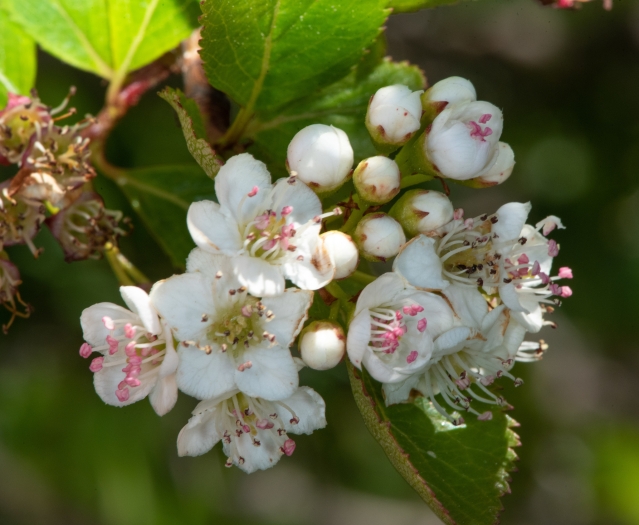Huckleberry Hawthorn
(Crataegus gaylussacia)
Huckleberry Hawthorn (Crataegus gaylussacia)
/
/

© Don Loarie
CC BY 4.0
Image By:
© Don Loarie
Recorded By:
Copyright:
CC BY 4.0
Copyright Notice:
Photo by: © Don Loarie | License Type: CC BY 4.0 | License URL: http://creativecommons.org/licenses/by/4.0/ | Uploader: dloarie | Publisher: iNaturalist |

























Estimated Native Range
Summary
Crataegus gaylussacia, commonly known as Huckleberry Hawthorn, is a deciduous shrub or small tree native to the temperate regions Western North America. It typically grows at a moderate rate to a height and width of 5-15 feet (1.5-4.6 meters). This species is characterized by its dense, thorny branches and a rounded habit. The leaves are broadly oval and serrated, turning a striking red or orange in the fall. In spring, clusters of fragrant white flowers bloom, which are followed by dark purple berries resembling huckleberries, hence the common name. These berries are attractive to birds and other wildlife.
Huckleberry Hawthorn is valued for its ornamental flowers, wildlife-friendly berries, and vibrant fall foliage. It is suitable for urban planting, border planting, and as a specimen in residential gardens. It is relatively easy to maintain, tolerating a range of soil types, from clay to loam and sandy soils, provided they have medium drainage. While it prefers full sun, it can also thrive in part shade. Gardeners should be aware of potential diseases such as rust and leaf spot, and the thorns can make maintenance a bit challenging.CC BY-SA 4.0
Huckleberry Hawthorn is valued for its ornamental flowers, wildlife-friendly berries, and vibrant fall foliage. It is suitable for urban planting, border planting, and as a specimen in residential gardens. It is relatively easy to maintain, tolerating a range of soil types, from clay to loam and sandy soils, provided they have medium drainage. While it prefers full sun, it can also thrive in part shade. Gardeners should be aware of potential diseases such as rust and leaf spot, and the thorns can make maintenance a bit challenging.CC BY-SA 4.0
Plant Description
- Plant Type: Tree, Shrub
- Height: 5-15 feet
- Width: 5-15 feet
- Growth Rate: Moderate
- Flower Color: White
- Flowering Season: Spring
- Leaf Retention: Deciduous
Growth Requirements
- Sun: Full Sun, Part Shade
- Water: Medium
- Drainage: Medium
Common Uses
Bird Garden, Low Maintenance
Other Names
Common Names: Hawthorn, May-tree, Suksdorf’s Hawthorn, Thornapple, Whitethorn, Hawberry
Scientific Names: , Crataegus gaylussacia, Crataegus douglasii var. suksdorfii, Crataegus suksdorfii,
GBIF Accepted Name: